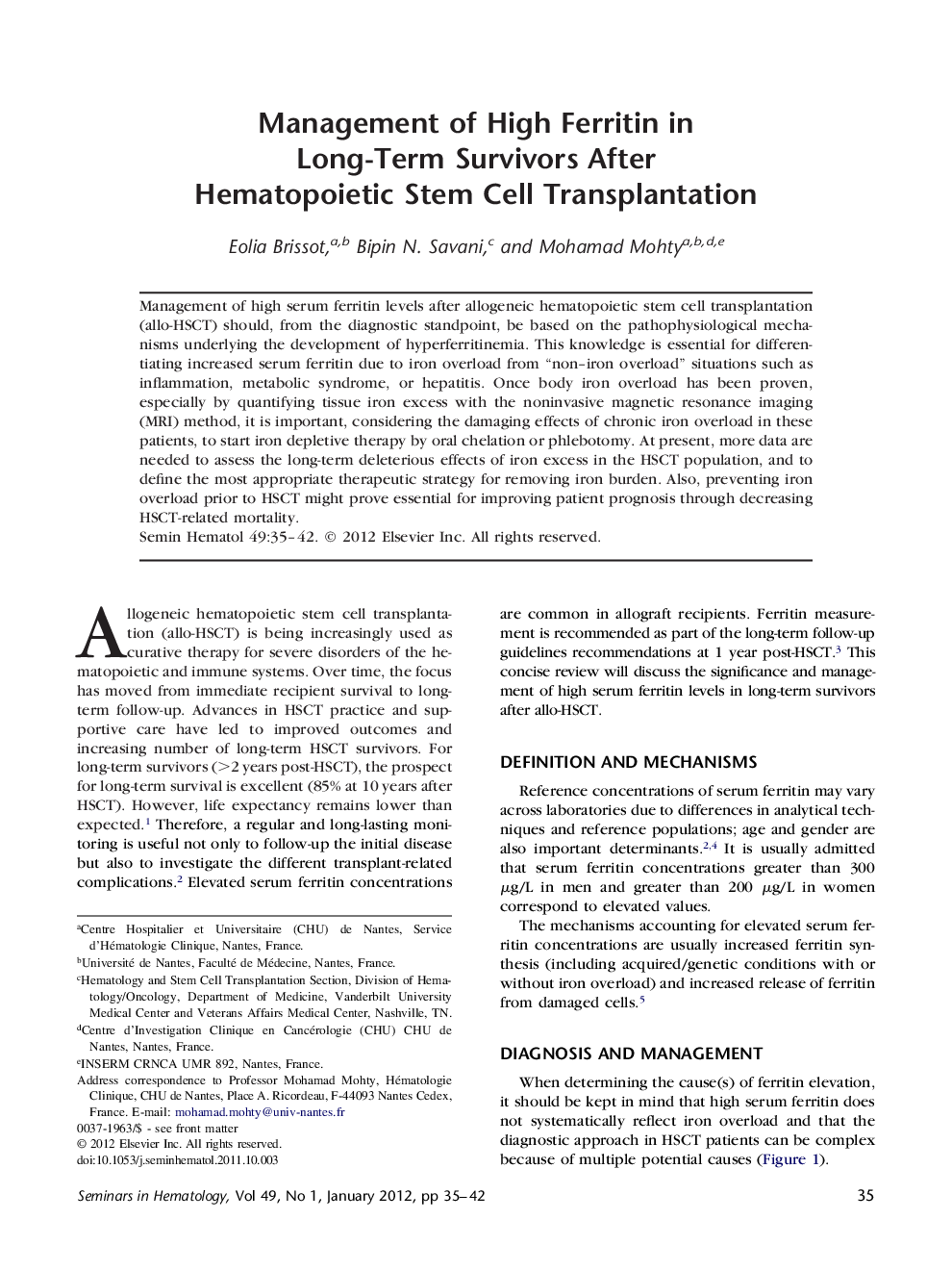| Article ID | Journal | Published Year | Pages | File Type |
|---|---|---|---|---|
| 3333655 | Seminars in Hematology | 2012 | 8 Pages |
Management of high serum ferritin levels after allogeneic hematopoietic stem cell transplantation (allo-HSCT) should, from the diagnostic standpoint, be based on the pathophysiological mechanisms underlying the development of hyperferritinemia. This knowledge is essential for differentiating increased serum ferritin due to iron overload from “non–iron overload” situations such as inflammation, metabolic syndrome, or hepatitis. Once body iron overload has been proven, especially by quantifying tissue iron excess with the noninvasive magnetic resonance imaging (MRI) method, it is important, considering the damaging effects of chronic iron overload in these patients, to start iron depletive therapy by oral chelation or phlebotomy. At present, more data are needed to assess the long-term deleterious effects of iron excess in the HSCT population, and to define the most appropriate therapeutic strategy for removing iron burden. Also, preventing iron overload prior to HSCT might prove essential for improving patient prognosis through decreasing HSCT-related mortality.
